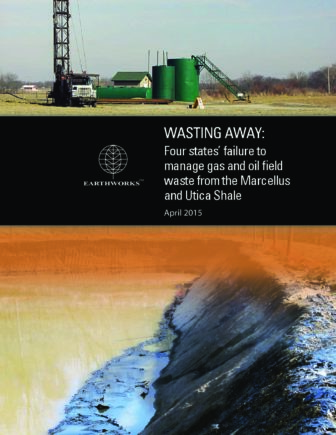Residents in Pennsylvania, New York State, and water protectors from the Seneca Nation of Indians are celebrating the defeat of a controversial project to treat toxic waste from fracking operations in the Marcellus Shale.
A treatment facility proposed for the floodplain of the Allegheny River would have released up to 42,000 gallons of industrial wastewater into the river per day.
It all began when a fracking company, JKLM Energy LLC (which happens to belong to Terry Pegula, the owner of the Buffalo Bills) enlisted the service of the Coundersport Municipal Water Authority to work with another company, Epiphany Water Solutions, to build a centralized wastewater treatment facility to dispose of “produced water” from JKLM’s natural gas drilling and fracking operations.
“Produced water” from shale fracking operations is toxic. It contains fracking chemicals, heavy metals, and radioactive materials.
Nearly 30 years ago – before shale gas fracking was even a ‘thing’ – the U.S. Environmental Protection Agency found that oil and gas wastes “contain a wide variety of hazardous constituents” and that “regulatory gaps exist.” Despite this, EPA created an even wider gap in oversight by granting the oil and gas industry an exemption from rules governing hazardous waste.

(Read more about the industry’s exemption from hazardous waste regulations in Earthworks’ 2015 report, Wasting Away.)
Historically, the toxic fallouts from all mineral extraction, whether nickel or natural gas, have disproportionately inflicted low-income, rural and indigenous communities.
But Coudersport, a small town in rural, north-central Pennsylvania, together with downstream communities like the Seneca Nation of Indians, defeated plans for this waste facility, which would have supported further toxic development in a pristine, headwater region where everything is downstream. (See Triple Divide for more about this region.)
So how’d they do it?
By taking a firm stance – The headwater region and floodplain of a major river, upstream from millions of people and their water supplies, and home to endangered aquatic life, is the wrong place for a toxic waste facility.
By highlighting the hidden facts – Before an editorial was posted at Public Herald, the word “radioactive” had not appeared in promotions of the company, local officials, or the media. However, studies show fracking wastewater is toxic and contains varying amounts of radioactive materials. Studies also show the Marcellus and Utica Shales in the Northeast U.S. are the most radioactive of natural gas formations. (See Wasting Away, page 6.) Concerned individuals educated themselves and demanded accountability to the facts.
By attending every meeting – Local residents and downstream communities were represented at all public meetings related to the waste project, including monthly municipal meetings and hearings by the Pennsylvania Department of Environmental Protection.
By speaking up at every opportunity – Concerned individuals were not shy about their concerns and shared them by writing letters, informing media, submitting testimony, and commenting at public meetings. Over 3,000 written comments were submitted to the state’s Department of Environmental Protection from a broad-based and diverse group of voices, ranging from the Seneca Nation of Indians to the U.S. Army Corp of Engineers, U.S. Fish & Wildlife to the Allegheny Defense Project, Adirondack Mountain Club to the New York Department of Environmental Conservation, as well as Save The Allegheny, Earthworks and many others.
By demanding data – Those with concerns never accepted empty promises. They demanded the company “show” and not just “tell.” Although the company promised that its technology removed all radioactive and toxic chemicals before waste was discharged into the river, it never produced the data and has no patents on its technology.
By defending a shared, sacred ecosystem – Water evaporates, clouds travel, rain falls, and rivers flow. Water unites us all, and we speak in these terms. Some of us, particularly Indigenous Peoples, have an even deeper, spiritual relationship with water as an entity, not just an element. The Seneca Nation of Indians brought a sacred bond with water to the battle to protect the Allegheny River (Ohi:yo’ to the Seneca), which begins in Potter County, Pennsylvania, crosses the New York State border, and flows through the Seneca Nation’s Allegany Territory.
Make no mistake – once Epiphany had its ducks into regulated rows, DEP would have granted the permit. The agency has already permitted similar operations on the Susquehanna River.
If not for the united voice of the people, this toxic waste project would have been constructed.
People everywhere can apply an upstream / downstream approach to defend themselves wherever they are, no matter what confronts them. Who is “upstream” of the issue you face? Who is “downstream”?
Facts, figures, and dedication are important, but no one can win alone. Aligning with those people who have a “dog in the fight” is crucial for success when it comes to protecting our communities and future generations.
* Header photo by Stephen Rubin for Public Herald.
